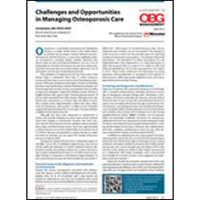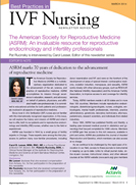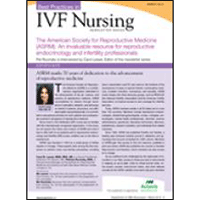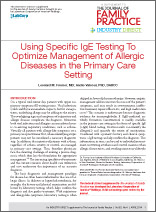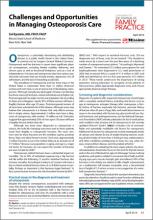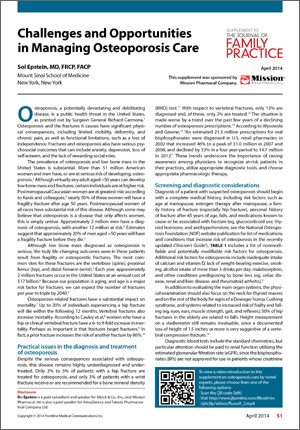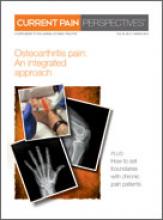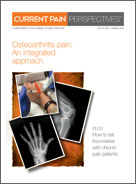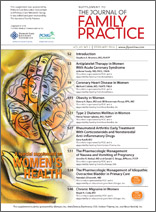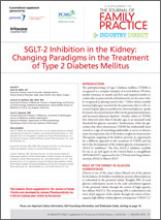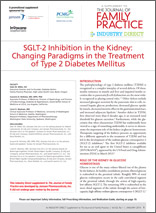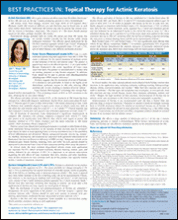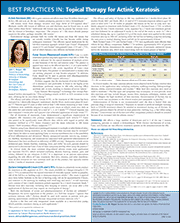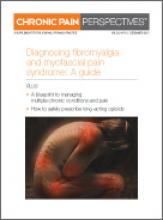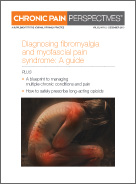User login
Challenges and Opportunities in Managing Osteoporosis Care
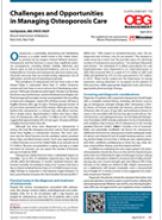
Click here to download the PDF.
Osteoporosis, a potentially devastating and debilitating disease, is a public health threat in the United States, as pointed out by Surgeon General Richard Carmona.1 Osteoporosis and the fractures it causes have significant physical consequences, including limited mobility, deformity, and chronic pain, as well as functional limitations, such as a loss of independence. Fractures and osteoporosis also have serious psychosocial outcomes that can include anxiety, depression, loss of self-esteem, and the lack of rewarding social roles.

Click here to download the PDF.
Osteoporosis, a potentially devastating and debilitating disease, is a public health threat in the United States, as pointed out by Surgeon General Richard Carmona.1 Osteoporosis and the fractures it causes have significant physical consequences, including limited mobility, deformity, and chronic pain, as well as functional limitations, such as a loss of independence. Fractures and osteoporosis also have serious psychosocial outcomes that can include anxiety, depression, loss of self-esteem, and the lack of rewarding social roles.

Click here to download the PDF.
Osteoporosis, a potentially devastating and debilitating disease, is a public health threat in the United States, as pointed out by Surgeon General Richard Carmona.1 Osteoporosis and the fractures it causes have significant physical consequences, including limited mobility, deformity, and chronic pain, as well as functional limitations, such as a loss of independence. Fractures and osteoporosis also have serious psychosocial outcomes that can include anxiety, depression, loss of self-esteem, and the lack of rewarding social roles.
Best practices in IVF nursing. The American Society for Reproductive Medicine (ASRM): An invaluable resource for reproductive endocrinology and infertility professions
The American Society for Reproductive Medicine (ASRM) is a multidisciplinary organization dedicated to the advancement of the art, science, and practice of reproductive medicine. ASRM accomplishes its mission through excellence in education, research, and advocacy on behalf of patients, physicians, and affiliated health care professionals. It is committed to educational activities for both patients and professionals involved in all aspects of reproductive medicine.
Click here to download the PDF.
The American Society for Reproductive Medicine (ASRM) is a multidisciplinary organization dedicated to the advancement of the art, science, and practice of reproductive medicine. ASRM accomplishes its mission through excellence in education, research, and advocacy on behalf of patients, physicians, and affiliated health care professionals. It is committed to educational activities for both patients and professionals involved in all aspects of reproductive medicine.
Click here to download the PDF.
The American Society for Reproductive Medicine (ASRM) is a multidisciplinary organization dedicated to the advancement of the art, science, and practice of reproductive medicine. ASRM accomplishes its mission through excellence in education, research, and advocacy on behalf of patients, physicians, and affiliated health care professionals. It is committed to educational activities for both patients and professionals involved in all aspects of reproductive medicine.
Click here to download the PDF.
Using Specific IgE Testing To Optimize Management of Allergic Diseases in the Primary Care Setting
On a typical mid-winter day, patients with upper respiratory symptoms fill waiting rooms. Viral infections (colds and flu) are immediate suspects, but for some patients, underlying allergy may be adding to the misery. The overlapping signs and symptoms of respiratory and allergic
On a typical mid-winter day, patients with upper respiratory symptoms fill waiting rooms. Viral infections (colds and flu) are immediate suspects, but for some patients, underlying allergy may be adding to the misery. The overlapping signs and symptoms of respiratory and allergic
On a typical mid-winter day, patients with upper respiratory symptoms fill waiting rooms. Viral infections (colds and flu) are immediate suspects, but for some patients, underlying allergy may be adding to the misery. The overlapping signs and symptoms of respiratory and allergic
Challenges and Opportunities in Managing Osteoporosis Care
Current Pain Perspectives—March 2014
A Special Supplement on Women’s Health
While better appreciated than 2 decades ago, gender-related differences remain an important issue in clinical practice. This supplement includes 8 articles that focus on the needs and considerations in providing care to women. Four articles focus on cardiometabolic diseases: acute coronary syndrome, coronary heart disease, obesity, and diabetes mellitus. Additional topics include the early management of rheumatoid arthritis and the pharmacologic management of nausea and vomiting of pregnancy.
The last 2 articles each offer the opportunity to earn 1 free CME credit: The Pharmacologic Management of Idiopathic Overactive Bladder in Primary Care and Chronic Migraine in Women. Credit is awarded for successful completion of the quizzes at the links below; these links may also be found in the Women’s Health supplement on the first page of each article.
The Pharmacologic Management of Idiopathic Overactive Bladder in Primary Care www.pceconsortium.org/oab
Chronic Migraine in Women www.pceconsortium.org/migraine
While better appreciated than 2 decades ago, gender-related differences remain an important issue in clinical practice. This supplement includes 8 articles that focus on the needs and considerations in providing care to women. Four articles focus on cardiometabolic diseases: acute coronary syndrome, coronary heart disease, obesity, and diabetes mellitus. Additional topics include the early management of rheumatoid arthritis and the pharmacologic management of nausea and vomiting of pregnancy.
The last 2 articles each offer the opportunity to earn 1 free CME credit: The Pharmacologic Management of Idiopathic Overactive Bladder in Primary Care and Chronic Migraine in Women. Credit is awarded for successful completion of the quizzes at the links below; these links may also be found in the Women’s Health supplement on the first page of each article.
The Pharmacologic Management of Idiopathic Overactive Bladder in Primary Care www.pceconsortium.org/oab
Chronic Migraine in Women www.pceconsortium.org/migraine
While better appreciated than 2 decades ago, gender-related differences remain an important issue in clinical practice. This supplement includes 8 articles that focus on the needs and considerations in providing care to women. Four articles focus on cardiometabolic diseases: acute coronary syndrome, coronary heart disease, obesity, and diabetes mellitus. Additional topics include the early management of rheumatoid arthritis and the pharmacologic management of nausea and vomiting of pregnancy.
The last 2 articles each offer the opportunity to earn 1 free CME credit: The Pharmacologic Management of Idiopathic Overactive Bladder in Primary Care and Chronic Migraine in Women. Credit is awarded for successful completion of the quizzes at the links below; these links may also be found in the Women’s Health supplement on the first page of each article.
The Pharmacologic Management of Idiopathic Overactive Bladder in Primary Care www.pceconsortium.org/oab
Chronic Migraine in Women www.pceconsortium.org/migraine
SGLT-2 Inhibition in the Kidney: Changing Paradigms in the Treatment of Type 2 Diabetes Mellitus
BEST PRACTICES IN: Topical Therapy for Actinic Keratosis
Medical Education Library
A Best Practices Supplement to Skin & Allergy News®. This supplement was sponsored by Valeant Pharmaceuticals North America LLC.
- Introduction
- Carac Cream (fluorouracil cream) 0.5%
- Zyclara (imiquimod) Cream 2.5% and 3.75%
- Summary
- IMPORTANT SAFETY INFORMATION
Faculty/Faculty Disclosure
Dr. Harper, MD
Clinical Associate Professor of Dermatology University of Alabama-Birmingham Dermatology and Skin Care Center of Birmingham, P.C.
Birmingham, Alabama
Dr. Harper reported that she is a consultant and speaker for Medicis Pharmaceutical Corporation, a division of Valeant Pharmaceuticals, and received compensation from Valeant for her assistance in developing the content of this article.
LINKS: Click Here for PDF.
Copyright © by Frontline Medical Communications Inc.
Medical Education Library
A Best Practices Supplement to Skin & Allergy News®. This supplement was sponsored by Valeant Pharmaceuticals North America LLC.
- Introduction
- Carac Cream (fluorouracil cream) 0.5%
- Zyclara (imiquimod) Cream 2.5% and 3.75%
- Summary
- IMPORTANT SAFETY INFORMATION
Faculty/Faculty Disclosure
Dr. Harper, MD
Clinical Associate Professor of Dermatology University of Alabama-Birmingham Dermatology and Skin Care Center of Birmingham, P.C.
Birmingham, Alabama
Dr. Harper reported that she is a consultant and speaker for Medicis Pharmaceutical Corporation, a division of Valeant Pharmaceuticals, and received compensation from Valeant for her assistance in developing the content of this article.
LINKS: Click Here for PDF.
Copyright © by Frontline Medical Communications Inc.
Medical Education Library
A Best Practices Supplement to Skin & Allergy News®. This supplement was sponsored by Valeant Pharmaceuticals North America LLC.
- Introduction
- Carac Cream (fluorouracil cream) 0.5%
- Zyclara (imiquimod) Cream 2.5% and 3.75%
- Summary
- IMPORTANT SAFETY INFORMATION
Faculty/Faculty Disclosure
Dr. Harper, MD
Clinical Associate Professor of Dermatology University of Alabama-Birmingham Dermatology and Skin Care Center of Birmingham, P.C.
Birmingham, Alabama
Dr. Harper reported that she is a consultant and speaker for Medicis Pharmaceutical Corporation, a division of Valeant Pharmaceuticals, and received compensation from Valeant for her assistance in developing the content of this article.
LINKS: Click Here for PDF.
Copyright © by Frontline Medical Communications Inc.
